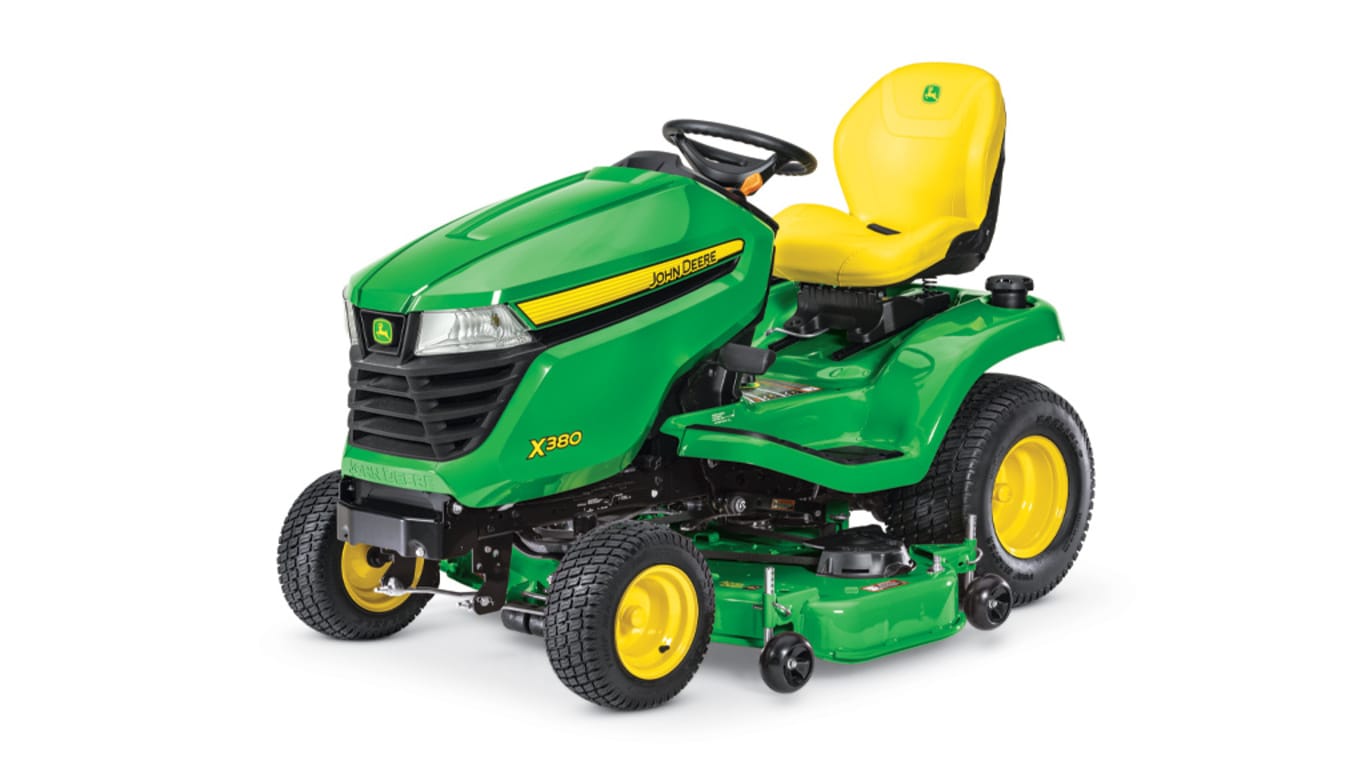Gasoline can remain viable in a lawn mower for about 30 days. Using stabilized fuel extends this period to about 90 days.
Maintaining your lawn mower’s performance involves understanding fuel longevity. Fresh gasoline is essential for the smooth running of lawn equipment, as it degrades over time. Factors such as the ethanol content in modern gas can lead to moisture accumulation and eventual degradation of the fuel’s combustibility.
Optimal engine health demands regular use or proper fuel storage. Homeowners and gardening enthusiasts must ensure their mowers are ready for action by managing the lifespan of the fuel in their machines. Keeping gas fresh, either by using the mower regularly or using fuel stabilizers, is key to avoiding starting issues and engine damage, thus keeping your lawn mower in peak condition for whenever you need it.
Understanding Gasoline Shelf Life
When it comes to maintaining your lawn mower, understanding how long gas can sit in the tank before it goes bad is crucial. The shelf life of gasoline is not indefinite; various factors influence how long your fuel remains fresh and efficient for your lawn mower’s engine. Now let’s delve into the complexities of gasoline degradation and what you can do to ensure your mower runs smoothly every time.
Factors Affecting Gasoline DegradationFactors Affecting Gasoline Degradation
Different variables play a role in the deterioration of gasoline quality over time. From chemical composition to the storage environment, understanding these can help you maximize your mower’s fuel life.
- Oxygen exposure – Fuels oxidize and lose effectiveness.
- Temperature fluctuations – Can lead to condensation and contamination.
- Time – The longer gas sits, the more it loses its combustibility.
- Added Ethanol – Absorbs moisture which can cause phase separation.
Environmental Influences
The surrounding environment has a significant impact on gasoline stabilization. Storing your lawn mower in a place that’s either too hot or too cold can lead to fuel degrading faster than expected. Ideally, aim for a dry, cool, and dark spot to extend fuel shelf life significantly.
| Environment | Effect on Gasoline |
|---|---|
| High Heat | Increases rate of evaporation and oxidation. |
| Direct Sunlight | Can alter gasoline composition, leading to gum formation. |
| Excessive Moisture | Heightens risk of contamination and phase separation (ethanol-blended fuels). |
Gasoline Composition
Gasoline is a complex blend of hydrocarbons, each with a different rate of evaporation which means that over time, the lighter compounds can evaporate leaving behind a heavier, less volatile residue. Adding stabilizers to the fuel can prevent degradation and are particularly beneficial if storage beyond a month is expected.
Effects of Aged Gasoline on Engine PerformanceEffects Of Aged Gasoline On Engine Performance
Using aged gasoline can lead to a myriad of engine problems. Ethanol-blended fuels, common in many areas, tend to absorb water, which can separate from the gasoline and cause starting issues or even engine damage. It is clear that stale gas can result in:
- Hard starting
- Poor engine performance
- Decreased fuel economy
- Potential for internal corrosion
- Blocked fuel lines and filters due to sediment build-up
Ensuring the use of fresh gasoline will help keep your lawn mower running efficiently and effectively, saving you from costly repairs and downtime. Regularly check and maintain your fuel to safeguard your lawn mower’s longevity and performance.
How Long Can Gas Sit In A Lawn Mower?
Lawn mowers, the trusty companions of garden enthusiasts, are powered by engines that require gasoline to function. But a lingering question amongst many is: How long can gas sit in a lawn mower without causing issues? Understanding the lifespan of gasoline in your lawn mower’s tank is crucial for maintaining its performance and longevity.
Recommended Maximum Gasoline Storage Time
Gasoline begins to degrade over time, leading to potential engine problems. It’s generally accepted that gasoline should not sit in a lawn mower for more than 30 days without stabilization. Storage beyond this timeframe increases the risk of fuel degradation, which can compromise the efficiency and functionality of your lawn mower.
Manufacturer Guidelines
Different lawn mower manufacturers provide their own set of recommendations. To avoid any ambiguity, consult your lawn mower’s manual for specific advice. Manufacturers typically outline the best practices for fuel storage and the type of gasoline that works best for their engines.
Expert Recommendations
Experts in the field agree that using fresh gasoline is ideal. For longer storage periods, they recommend draining the tank or adding a fuel stabilizer to extend the gasoline’s shelf life and safeguard the mower’s engine against corrosion and gum deposits.
Signs Of Bad Gas In A Lawn Mower
Identifying bad gas is pivotal in preventing engine mishaps. Some telltale signs include:
- Foul odor: Gasoline that has gone bad often smells sour.
- Difficulty starting: The mower may struggle to start or might not start at all.
- Varied engine sounds: Unusual noises or sputtering may indicate fuel issues.
Engine Performance Issues
Stale or contaminated gas can lead to engine performance issues, such as reduced power, stalling, or uneven operation. Regular maintenance and using fresh gas can help keep performance consistently high.
Fuel System Problems
Leaving gas in a mower for too long can cause problems like clogged fuel filters, gummed-up carburetors, and corroded fuel lines. To prevent such issues, use gasoline promptly and store properly if needed, keeping an eye on the signs of degradation.
Tips For Preserving Gas Quality In Lawn Mowers
Ensuring your lawnmower’s gasoline remains fresh can often be an afterthought. Yet, the longevity and performance of your equipment are closely linked to the quality of the fuel it uses. High-quality and well-preserved gas can prevent a multitude of engine issues, making understanding and implementing fuel preservation techniques critical for any lawnmower owner. Let’s dive into some valuable tips for maintaining your gas in peak condition, prolonging the life of your lawnmower.
Proper Gasoline Storage Techniques
Storing gasoline correctly is pivotal to preserving its quality. Always use clean containers designed for fuel storage to prevent contamination. Limiting exposure to air is key, so ensure the container is airtight. For long-term storage, consider adding a fuel stabilizer to the gasoline as soon as you purchase it, as this can extend the fuel’s usability.
Fuel Container Selection
The right choice of container can significantly affect gas longevity. Opt for containers made of high-density polyethylene (HDPE) or metal that are UL or FM approved. These materials are designed to withstand the volatility of fuel and prevent leakage or degradation of the gas.
Storage Location Considerations
Selecting an ideal storage location is crucial. Store gasoline in a cool, well-ventilated area away from direct sunlight. Fluctuations in temperature can lead to condensation, so maintaining a consistent storage temperature is important. Additionally, store fuel away from any potential ignition sources to ensure safety.
Using Fuel Additives
Fuel additives can be invaluable in maintaining gas quality. When used correctly, they stabilize the fuel, reduce moisture, and clean the carburetor and fuel injectors. Make sure to add these to your fuel following the manufacturer’s guidelines.
Types Of Additives
There is a variety of additives available, each designed for a specific purpose. Fuel stabilizers are the most common type used for storage. Others include carburetor cleaners, fuel system cleaners, and octane enhancers. Select an additive that corresponds with your specific preservation needs.
Application And Effectiveness
To ensure maximum effectiveness, apply the additive to the gas when it is fresh. Mix the proper ratio as indicated by the product instructions. Regular use can prevent build-up and improve engine start-up efficiency. Documenting the type and date of application can also help in maintaining an effective maintenance schedule for your lawn mower.
Maintaining A Healthy Fuel System
Maintaining a Healthy Fuel System in your lawn mower is crucial for its performance and longevity. Just as the human body requires clean blood to function optimally, a lawn mower demands pure fuel to operate efficiently. Over time, gas left in a lawn mower can lead to several issues, including gum and varnish buildup, corrosion, and starting problems. To ensure that your lawn mower starts up smoothly and runs at peak efficiency, follow these essential maintenance steps.
Regular Fuel System Maintenance
Consistent maintenance keeps the fuel system clear of obstructions and degradation. Each season, check the system for any signs of wear or damage. A visual inspection can save you from future headaches, ensuring that each component, from the tank to the fuel lines, remains in good working order.
Fuel Filter Replacement
The fuel filter is your lawn mower’s shield against impurities. Replace it annually or as needed to prevent debris from clogging the engine. A clean filter helps maintain a consistent fuel flow and protects critical engine parts from dirt and sediments.
Carburetor Cleaning
A sparkling carburetor ensures that your lawn mower’s engine runs smoothly. Regular cleaning, ideally at the start of each season, keeps the carburetor from gumming up. Use a commercial carburetor cleaner for the best results. A clogged carburetor can result in sluggish performance or, worse, a non-starting engine.
Importance Of Fresh Gasoline
- Prevents fuel decay and varnish formation.
- Avoids corrosion within the fuel system components.
- Ensures optimal engine start-up and performance.
Fresh gasoline is key to a healthy fuel system. Old gas deteriorates over time, losing combustibility and potentially harming your lawn mower. To prevent this, only use gas that is less than 30 days old, and add a fuel stabilizer if you plan to store fuel for an extended period.
Refueling Best Practices
- Always use clean, stabilized fuel.
- Never overfill the tank to avoid spillage.
- Securely tighten the gas cap post-refueling.
Following these refueling best practices can save your engine from unnecessary wear and prevent potential safety hazards. Always leave room for the fuel to expand, especially in warmer weather to minimize the risk of overflow.
Effects Of Ethanol In Gasoline
Modern fuels often contain ethanol, which can absorb moisture from the atmosphere. This can lead to phase separation, where the ethanol and water mixture sinks to the bottom of the tank, leading to engine problems. If possible, use ethanol-free gas or minimize the ethanol content to E10 (10% ethanol) to protect your mower’s engine and fuel system from corrosion and wear.

Credit: www.deere.com
Frequently Asked Questions For How Long Can Gas Sit In A Lawn Mower
What’s The Shelf Life Of Gas In A Mower?
Gas stored in a lawn mower typically remains viable for about 30 days. After this period, the fuel may start to degrade due to oxidation and evaporation, which can lead to performance issues or damage to the mower’s engine.
How To Store Gas For Lawn Mower Longevity?
To extend the life of gas for your lawn mower, store it in a cool, dry place away from direct sunlight in a sealed, airtight container. Using a fuel stabilizer can also help preserve the gas for up to 24 months.
Does Stale Gas Cause Mower Damage?
Yes, stale gas can damage a lawn mower’s engine. Over time, degraded gas can create gum and varnish that clog the carburetor and fuel system, leading to hard starting and poor performance, potentially requiring costly repairs.
Can Fuel Stabilizers Extend Gasoline Life?
Fuel stabilizers can significantly extend the life of gasoline in a lawn mower. When added to fresh fuel, they can maintain its quality for up to 24 months, preventing the issues associated with stale gas.
Conclusion
Storing gas in your lawn mower demands attention to detail and safety. Ideally, refresh the fuel every month for peak performance. Remember, proper storage ensures both efficiency and longevity for your equipment. As seasons change, so should your maintenance routine—don’t let stale gas compromise your mower’s health.
Stay vigilant, and happy mowing!
